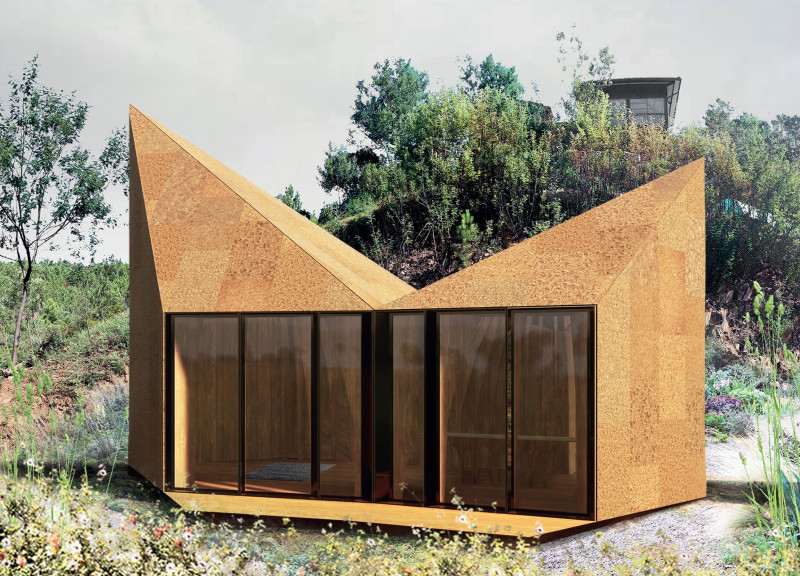5 key facts about this project
The Sobreiro Santuário is located in Vale de Moses, Portugal, designed as a wellness retreat focused on mindfulness and reflection. It draws inspiration from ancient temples, merging modern construction techniques with elements that foster a connection to nature. The project aims to create a peaceful environment where visitors can engage in self-care and enjoy the surroundings. The overall design concept intertwines spirituality with functionality, appealing to those seeking tranquility.
Design Concept
Two circular spaces define the design, each shaped like a curved coned dome. These domes are joined to create a unified space that emphasizes flow and movement. The curves of the architecture invite visitors to explore the area, promoting relaxation and self-discovery. This thoughtful layout encourages a strong connection between the structure and its natural backdrop, enriching the experience for all who enter.
Materiality
Cork is used as the primary material for the outer shell of the building, reflecting local traditions while supporting sustainability efforts. The properties of cork—its durability and resistance to moisture—contribute to the overall effectiveness of the design. Eucalyptus plywood forms the internal framework, offering a contrast that enhances the architectural complexity. This material allows for precision in construction while maintaining a lightweight feel.
Construction Methodology
The approach to construction prioritizes efficiency through off-site fabrication and easy assembly. Each cabin features a foundation made from posts and stone, designed to limit disturbance to the landscape. The inclusion of practical elements like renewable energy heating and a water supply system demonstrates a commitment to modern sustainability. This holistic approach ensures a minimal environmental impact throughout the building process.
The design showcases a spiraling frame that rises from the ground to the top of the domes, mirroring the natural vertical lines found in the surrounding trees. This detail emphasizes the relationship between the structure and its environment, creating a sense of harmony that resonates with anyone visiting the site.






















































